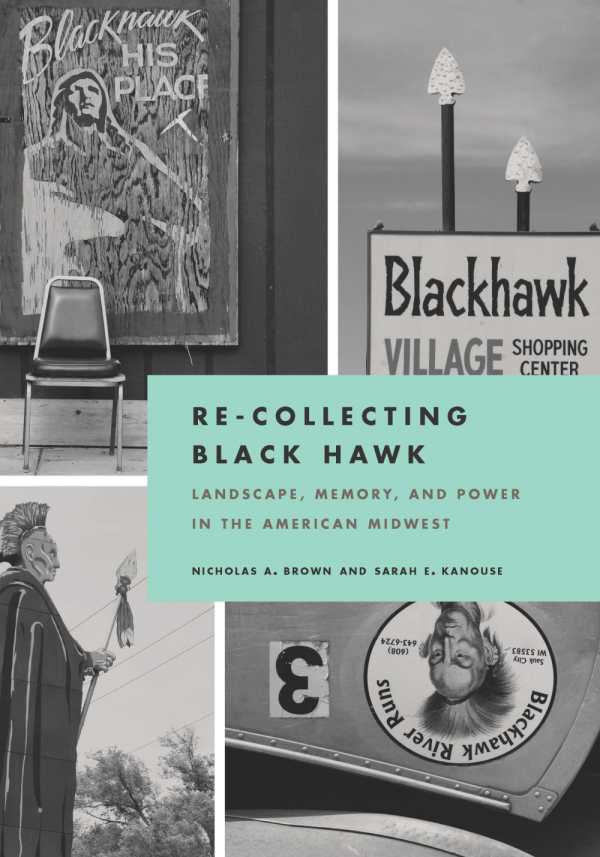Re-Collecting Black Hawk
Landscape, Memory, and Power in the American Midwest
This book provides the stark contrast between names and actual historical events in cases where one version of history is promoted over another.
Re-Collecting Black Hawk puts forth a provocative and thorough examination of how a historical Sac and Fox leader has been reduced to a footnote. Native American historical figures have been subsumed into the US landscape via the naming customs of our European ancestors. Nicholas A. Brown and Sarah E. Kanouse use images and text in a juxtaposition that forces the viewer to think about what this means for Native Americans.
Many streets and parks have been named for notable historical figures, but very few have been co-opted for business names. Makataimeshekiakiak’s English name, Black Hawk, has been used for everything from a Sauk City, Iowa, canoe service to a bowling alley in Sterling, Illinois. Contrasted with the name of Martin Luther King, Jr. and its use for streets, boulevards, and avenues in several large US cities, the name of Black Hawk has been diffused to the point of being only a name. Any connection between Black Hawk and his place in US history barely exists for most people living in Iowa and Illinois; quite the opposite, however, is true for his tribe and descendants.
Brown and Kanouse are adept at pairing their selected photos and texts. The result is a window into how Sac and Fox people view the co-opting of the name and life of one of their ancestral leaders, including texts on protests against actions that they consider detrimental to both the Black Hawk tribe and the land itself. Everything from historical markers for places and people considered notable (and written exclusively for white descendants) to sports team mascots for high schools and colleges is covered in this book.
As an educational tool, Re-Collecting Black Hawk could make a formidable text for US history studies at the university level, particularly in discussions of how the dominant European culture of the US has all but buried the existence of peoples who were on the North American continent before Europeans arrived. Its other, equally vital use (if not more so to the Sac and Fox people) is in gathering up information about the actual Black Hawk and returning it to its real-life context. It’s a laudable effort that succeeds very well.
Reviewed by
J. G. Stinson
Disclosure: This article is not an endorsement, but a review. The publisher of this book provided free copies of the book to have their book reviewed by a professional reviewer. No fee was paid by the publisher for this review. Foreword Reviews only recommends books that we love. Foreword Magazine, Inc. is disclosing this in accordance with the Federal Trade Commission’s 16 CFR, Part 255.

